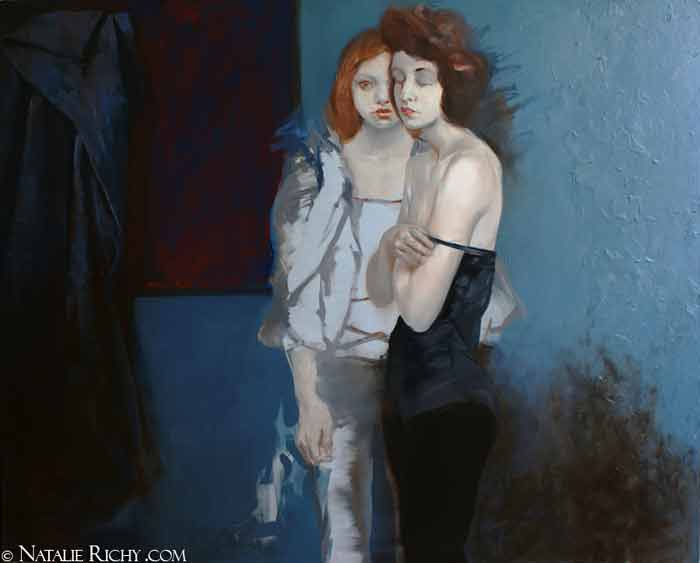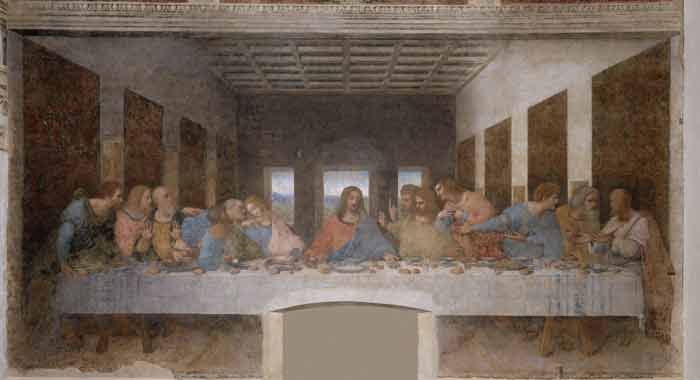On 11 Aug, 2011 With
A French Naive or Primitive painter. Henri Rousseau was also known as Le Douanier (the customs officer), a humorous description of his occupation as a tax collector. Ridiculed during his life, he came to be recognized as a self-taught genius whose works are of high artistic quality. Henri Rousseau was born in Laval, France into the family of a tinsmith. He attended Laval High School as a day student and then as a boarder. He was mediocre in some subjects at the high school but won prizes for drawing and music. He worked for a lawyer and studied law, but “attempted a small perjury and sought refuge in the army,” serving for four years, starting in 1863. With his father’s death, Rousseau moved to Paris in…
Read More
On 4 Aug, 2011 With
This Video shows the creation of the figurative painting. The canvas is toned with a thin layer of oil imprimatura, and the two figure drawing is done in sanguine. The oil painting approach is one of simplification of form and colour. In contrast to the clarity with which Natalie describes faces, details of the dress and drapery are done in loose brushstrokes and are stylised impressionistically. The composition of the painting is located in fictive surroundings. The elegant blue colours in the painting suggest nostalgia, which ads imaginative and aesthetic significance. Natalie brought to this figurative picture a modern sensibility, impressionistic effects and painterly fluency.
Read More
On 3 Aug, 2011 With
The Video Lesson “How to Paint a Portrait in Oil” demonstrates the oil painting technique in the style of an 18th century Paris salon, explained in specific, sequential steps. From the positioning of the figure to the details of the background, this easy-to-follow process will give you the discipline and focus that the difficult art of portraiture demands. Oil painting is the process of painting with pigments that are bound with a medium of drying oil — especially in early modern Europe, linseed oil. Often an oil such as linseed was boiled with a resin such as pine resin or even frankincense; these were called ‘varnishes’ and were prized for their body and gloss. Other oils occasionally used include poppyseed oil, walnut oil, and safflower oil. These oils confer various…
Read More
On 7 Jul, 2011 With
What they learned from the OLD MASTERS? From Raphael. The Portrait of a Young Woman (also known as La fornarina) is a painting by the Italian High Renaissance master Raphael It is probable that the picture was in the painter’s studio at his death in 1520, and that it was modified and then sold by his assistant Giulio Romano. The woman is traditionally identified with the fornarina (bakeress) Margherita Luti, Raphael’s Roman mistress, though this has been questioned. The woman is pictured with an oriental style hat and bare breasts. She is making the gesture to cover her left breast, or to turn it with her hand, and is illuminated by a strong artificial light coming from the external. Her…
Read More
On 13 Jun, 2011 With
Oil Painting Methods – Oil paintings based on The Last Supper Leonardo da Vinci
Read More
On 8 Jun, 2011 With
How to paint in style of Leonardo da Vinci
Read More
On 2 Jun, 2011 With
Oil Painting Techniques – Oil paintings based on The Last Supper Leonardo da Vinci. How to imitate the Old Masters.
Read More
On 31 May, 2011 With
Manet’s Oil Painting Technique How to Paint in Oils Manet’s use of juxtaposed areas of dark tone, and his use of black-as a colour, and not as a tone (which are characteristics of much of his work, particularly of the 1860s) was wholly different from that of’ many of’ his contemporaries and demonstrates a very different technical procedure. Many mid -19th century painters favoured the use of bitumen, because of its beautiful, transparent brown colour. They loaded canvases with this unstable pigment and produced works which were superficially dramatic and flashy. The comments of Quentin Bell, although he is talking specifically of mid – l9th century British painters, are equally relevant to many French artists. He uses the term “slosh”…
Read More
On 26 May, 2011 With
Oil Painting Techniques – Oil paintings based on The Last Supper Leonardo da Vinci. The Last Supper in culture; how to imitate the Old Masters. Fine Art Lessons: Oil Painting Technique – How to paint in style of Leonardo da Vinci.
Read More
On 12 May, 2011 With
Leonardo da Vinci’s Oil Painting Technique – How to paint like the Old Masters. The Last Supper (Italian: Il Cenacolo or L’Ultima Cena) is a 15th century mural painting in Milan created by Leonardo da Vinci for his patron Duke Ludovico Sforza and his duchess Beatrice d’Este. It represents the scene of The Last Supper from the final days of Jesus as narrated in the Gospel of John 13:21, when Jesus announces that one of his Twelve Apostles would betray him. Leonardo da Vinci’s Oil Painting Technique: Leonardo da Vinci painted The Last Supper on a dry wall rather than on wet plaster, so it is not a true fresco. Because a fresco cannot be modified as the artist works,…
Read More






